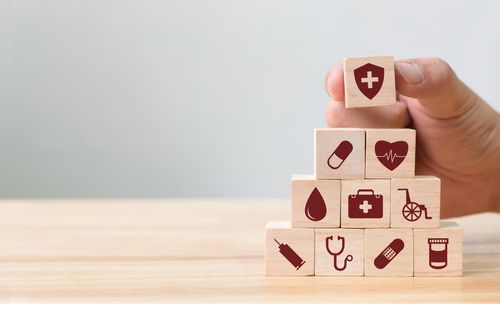New hazard, COVID-19
To date, over 100,000 deaths in the United States have been attributed to COVID-19. Employers have responded by allowing non-essential workers, and those who can work remotely, to work from home. However, a significant portion of the public sector workforce are considered essential, frontline workers who must report for work outside the home. This includes first responders such as police officers, firefighters, EMTs and paramedics. It also includes people who are not first responders but nonetheless provide essential public services such as corrections, public transit, sanitation, and healthcare employees. These individuals have a potentially higher likelihood of being exposed to the virus as a direct result of their jobs. This can lead to illness, disability and even death.
In response, governmental employers are reviewing and possibly changing their workers’ compensation programs and pension plan death benefits. Whether COVID-19 also creates any long-term disability issues is not clear, and there may not be enough known about its effects beyond the immediate term respiratory and other related health issues that it causes.
Benefits for in service deaths and illness
A safety net of benefits covers governmental employees who become injured or die as a result of illness or injury sustained on the job. Sometimes called Line of Duty (LOD) benefits, these can include workers’ compensation benefits, pension benefits, life insurance, and medical benefits. LOD pension benefits for death and disabilities are often lifetime benefits (to the spouse in cases of death) that can range from 66% to 100% of pay.
In extraordinary situations, existing programs have been altered to accommodate new or emerging events. Perhaps the most well-known example of this is New York City, where parameters were created for special benefits covering long-term health challenges, and in many cases death that were linked to the 9/11 terrorist attacks for those first responders at Ground Zero.[1]
In the current environment we have seen a number of programmatic responses:
Public Safety Officers’ Benefits (PSOB) Program
This Federal program provides a lump sum death benefit to the family of public safety employees who die in the LOD. The current death benefit is $365,670, and it increases annually. Various legislation has been proposed (SAFR Act, Public Safety Officer Pandemic Response Act) which would establish a temporary presumption that if a public safety officer contracts COVID-19, this is a LOD illness and the officer and his/her family may receive death benefits under PSOB. More information about this program is available online.
Pennsylvania
Act 17 of 2020, signed into law on April 29, 2020, guarantees that police officers, firefighters and other public safety workers who contract or are exposed to COVID-19 and are unable to work will continue to receive their full salary and benefits without being forced to prove that the infection was a direct result of their work. This benefit is paid by the state outside of other programs.
California
The governor issued an executive order on May 6, 2020 which makes it easier for workers who contract COVID-19 to obtain workers’ compensation benefits. The order establishes a rebuttable presumption that a worker infected with COVID-19 contracted the disease on the job. The presumption is retroactive to March 19th (the date of the governor's first shelter-in-place order) and extends to 60 days from the date this latest order was signed, which makes the effective presumption period for employees working outside their home from March 19, 2020 through July 5, 2020. The order requires use of available employer-provided COVID-19 temporary disability benefits before accessing workers compensation and grants such temporary disability benefits where not already available.
New York
The New York State legislature passed a bill to establish a COVID-19 pension benefit for families of public employees who die due to their workplace exposure to the disease. Where a member of a public retirement system 1) was required to physically report to work, 2) did in fact physically report to work as of March 1, 2020, 3) contracted COVID-19 within 45 days of reporting to work, and 4) COVID-19 caused or contributed to the member's death, the member's beneficiary will receive accidental death benefits. NYC Mayor Bill de Blasio publicly announced his support for LOD death benefits for survivors of municipal employees who die of COVID-19. This would grant death benefits and health insurance to surviving family members.
Other sources to consider
The National Conference of State Legislators (NCLS) provides an up-to-date summary of state level legislation and executive orders regarding COVID-19 workers compensation benefits.
Areas for consideration by employers and plan sponsors
Many local (city, county, etc.) pension and welfare plans have more generous death benefits available to the survivors of employees who die as a direct result of a workplace event. These LOD death provisions can cover all employees or sometimes cover more narrow groups such as just police and fire employees. Workers’ compensation rules may govern the determination of whether the death is considered LOD under the pension and benefit plans.
COVID-19 is a different type of workplace hazard than has typically been considered as triggering eligibility for LOD benefits in public pension and benefit plans. It is difficult to demonstrate that a person contracted COVID-19 at work (or as part of performing their regular workplace duties). Jurisdictions that have experienced a large incidence of the illness are more likely to consider whether a person who dies from COVID-19 should be presumed to be a LOD death, and whether the groups of employees eligible for LOD death benefits due to COVID-19 should be expanded. Considerations for employers (and possibly pension trustees) considering this possibility include:
Who to include?
Public safety workers are an obvious group, as they are the employees most likely to be covered by these benefits under more common circumstances. However, as noted previously, there are a variety of other types of workers with an increased likelihood of contracting COVID-19 as a direct result of their essential worker status, such as those working in public transit, corrections, sanitation and healthcare.
Employers will want to consider if eligibility should be defined very narrowly, limited to specific, enumerated job classifications or if eligibility is defined more broadly. Examples of a broader definition of eligible employee might include “any person required to perform their jobs in a way that brings them into contact with large numbers of people” or “any person required to work at their usual (outside the home) workplace during the pandemic”. The broader the group the better for employee morale. Employer/employee trust is increased and a return to more typical workplace interactions is made easier. This can, however, also be a more expensive option as the number of potential claimants is much higher.
Who qualifies?
Ordinarily, to receive LOD benefits, it must be very clear that the illness or injury is work related. In limited situations it is “presumed” that an injury or death is in the LOD. These are typically well defined and prescriptive (firefighters with certain cancer diagnosis for example).
Employers will want to consider how a COVID-19 diagnosis is linked to work as this can be very difficult to prove. They may require a clean test prior to reporting to work (assuming that testing was available at that time), a clear vector for an exposure to the virus in the work environment and/or a positive test within a certain period following the exposure. These all create administrative challenges for both the employer and the employee.
An alternative is to use a presumptive approach for COVID-19. This eases some strain by eliminating the need for a clean test before reporting to work and to identify a clear point of exposure. However, it should still be linked to a preset time period between presumed exposure and diagnosis (i.e. within two weeks of last shift). For workers, having a presumptive approach would take away much of the stress of returning to work while the incidence of the virus is still prevalent.
Precedents and Duration
COVID-19 differs from the flu, pneumonia, and other potentially deadly diseases in that it is new and has a relatively high mortality rate (based on data to date). Enhancing benefits to cover work-based exposures could set a precedent for future actions. We recommend employers consider carefully how to define any implicit or explicit expansion of programs to cover COVID-19 as a LOD event. We also recommend that any special programs or expansions be limited in duration so that a person who becomes sick due to COVID-19 at a later point in time (for example, after a vaccine is widely available) cannot still claim a LOD benefit
Conclusions
COVID-19 has brought many unexpected challenges to employers. Taking care of workers in the face of so much uncertainty is very important to governments and their employees. Developing a good understanding of how existing programs will treat employees who contract COVID-19, and whether or how those programs should be adjusted in the face of this new situation, is a key issue for HR directors and their employers.
Often there is a wide variety of paid-time-off policies in place for employees. However, if workers’ compensation or pensions are involved, it may be beneficial to construct specific rules or legislation and avoid expansion through administrative action which can create precedent that leads to an unintended expansion of policies and an increase in future benefit obligations.
Contact Tom Vicente: tvicente@boltonusa.com; 443.573.3918 or your Bolton consultant to learn more about what other employers are doing and how your programs may be affected by COVID-19.
[1] https://www1.nyc.gov/site/911health/enrollees/9-11-health-and-compensation-act-faq.page




